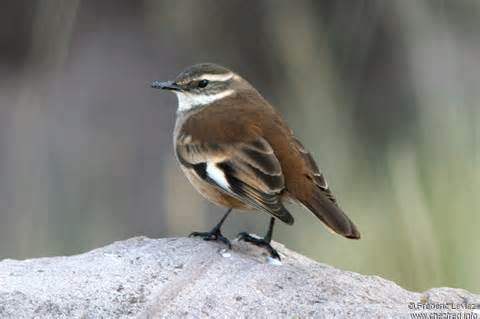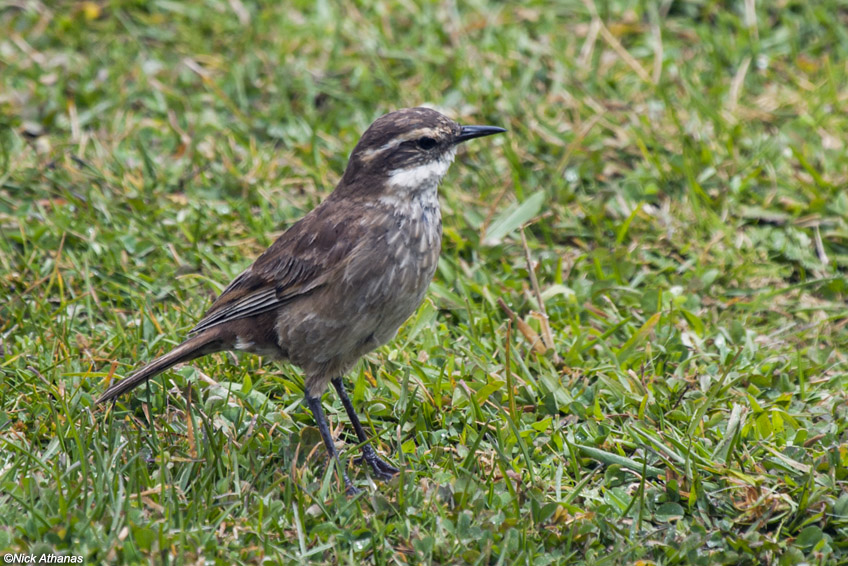
Cinclodes fuscus
SUBFAMILY
Furnariinae
TAXONOMY
Cinclodes fuscus Vieillot, 1818.
OTHER COMMON NAMES
French: Cinclode brun; German: Binden-Uferwipper; Spanish:
Ticotico de Cuello Blanco.
PHYSICAL CHARACTERISTICS
Body length is about 7 in (17–17.5 cm). Bill is rather short,
almost straight, and pointed. The tail is of medium length.
The sexes are similar. The overall coloration is dull brown on
the back, with a tan belly, white throat finely barred with
brown, conspicuous whitish or tan wing-stripes visible in
flight, and a white stripe over the eye. There is significant geographic
variation in the plumage coloration of this widespread
species.
DISTRIBUTION
Occurs in isolated pockets of the Andean region from southern
Venezuela through Colombia, and more continuously through
Ecuador, Peru, western Bolivia, and Chile and western Argentina
throughout Patagonia.
HABITAT
Inhabits open grasslands at higher altitudes of the mountains
and at lower levels in Patagonia. Usually occurs in the vicinity
of surface water, such as streams, rivers, ponds, or lakes. Occurs
as high as about 16,400 ft (5,000 m).
BEHAVIOR
Mostly a non-migratory species, although Patagonian populations
may migrate northward to spend their winter in a lower
latitude. Usually occurs singly or in pairs. Defends a breeding
territory. A largely terrestrial bird that runs and hops over the
ground, and also perches in shrubs. The song is a short, rapid
trill, often given in flight.
FEEDING ECOLOGY AND DIET
Forages for insects and other small invertebrates on the
ground, often by probing into soft earth with its bill.
REPRODUCTIVE BIOLOGY
Builds a nest in a burrow that it excavates itself, or in a natural
cavity in an earthen bank or rock pile. Both the male and female
incubate the eggs and rear the nestlings.
CONSERVATION STATUS
Not threatened. A widespread and abundant species within its
HABITAT
.
SIGNIFICANCE TO HUMANS
None known.
Other popular Animals
Photo Gallery of - Bar-winged cinclodes




 Animalia Life
Animalia Life